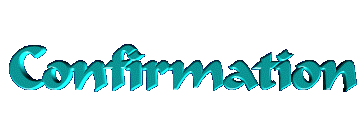
The Charts...
The original hand-drawn charts.
Confirmation 1
Confirmation 2
Confirmation 3
Confirmation 4
Confirmation 5
Confirmation 6
The new, improved NoteWorthy charts.
Confirmation 1
Confirmation 2
Confirmation 3
Confirmation 4
Confirmation 5
Confirmation 6
The TAB charts
Confirmation 1
Confirmation 2
Confirmation 3
Confirmation 4
Confirmation 5
Confirmation 6
MIDI samples.
Confirmation 1
Confirmation 2
Confirmation 3
Confirmation 4
Confirmation 5
Confirmation 6
Full Length MIDI Version
Get a free NoteWorthy Player to hear & see:
Confirmation 1
Confirmation 2
Confirmation 3
Confirmation 4
Confirmation 5
Confirmation 6
Full Length NoteWorthy Version
MIDI Metronomes for practicing: @
80 bpm &
100 bpm, which can be counted doubletime, of course.
The Story...
The above six choruses of bass lines for Charlie Parker's Confirmation were written when I was taking my first video
lesson from Berklee Bass Prof Bruce Gertz. {No, I didn't attend Berklee. Anyone can take lessons from Bruce through the mail on either cassette or VCR. It's a great way to interact with the best instructors}. My first assignment was to send him a tape of me playing something that I
transcribed. [in promotion of Bruce I must say that EACH student chooses the content of the first assignment bassed :)
on individual choice of study] I had just received the Jamey Aebersold Bird CD in the mail. A Play-A-Long that you can pan right and play along with drums and piano and YOUR bass---though listening to Ron Carter's uncluttered example on the left is another benefit of the CD. You can also get a copy of his
improvised line for this recording in a book at Jamey's Jazz.
Anyway. The first thing I did was open the book that comes with the CD to the Confirmation chart. I figured this would be a better thing to do for my "assignment." than the Miles Davis CD. I was going to do one of the easy tunes like So What or All Blues, but a first impression somehow seemed more important. Of course, I was familiar with Confirmation before this, but I went right into charting out an "improvised" walking line that I intended to play over Ron Carter's part and send to Bruce as an example of how inept I was and where he should concentrate his efforts of instruction. It worked.
As I sat diligently at the music stand writing out the wonderful ideas that came streaming through for the changes in the tune, I was so proud that Professor Gertz was gonna HAFTA think I was this amazing player that the music moguls musta missed. Once the six choruses were complete, I practiced them over and over. Then I went to play along with the CD. As soon as Mr. Aebersold got to "2" of the count-in I knew there was trouble ahead. I had been practicing at 150-bpm and the tune was at 200! Most of the Parker versions were even faster, so what was I thinking? It wasn't until then that I also realized that the drummer and piano player certainly were NOT going to be playing along with my creation, and with the 2-feel head I was one chorus up on them. But after all that work and wonderful fantasies of my abilities how could I not send it? I included a version of So What, but he knew.
No matter how long these choruses are practiced, most of the busy 8th-note passages just don't fit with the tune. There are (thank you, God) some neat little riffs that can be made into spinoff tunes, and many fingerings that are fun to practice from these pages, so take a few and
let me know what you think and how you play them.
You'll have to change the AT to @ to prove you're human.Notes on the notation...
You'll notice that the tune is in 1 flat, the key of F, with common time. It's an example of the basssick AABA formula with 8 measures in each section. Whenever charting out chords I use a triangle for Major 7th chords and lowercase m for minor chords. The dash then, instead of denoting a minor chord, simply shows split chords in a measure. It seems to help me read &/or memorize the chord pattern more quickly. See also the basssick symbols page for other notation remarks. Of course P for Pull off & H for Hammer on applies throughout. But the whole point to these pages is the little numbers beneath the notes. They suggest the left-hand positions. 0 means open. In the first position {this is basssick not classic} the first finger, the index, would be at the first fret, and the pinky would be on the 4th fret etc. up the neck. A plus sign would indicate a stretch of the 2nd, 3rd, or 4th finger without changing the relative position of the first finger. The number at upper left before the double bar indicates the last position of the previous page. These six choruses were originally meant to be played consecutively.
All this isn't, of course, the only way to play it, nor is it necessarily a suggested way to play it. It's merely a means by which to communicate the experience of playing the piece. Let me know YOUR experiences of playing these, especially if you like different positions.
Enjoy whatever happens,

Back to the Practice Clypse.
©2003 Mello-Dee-O-Dough Music

